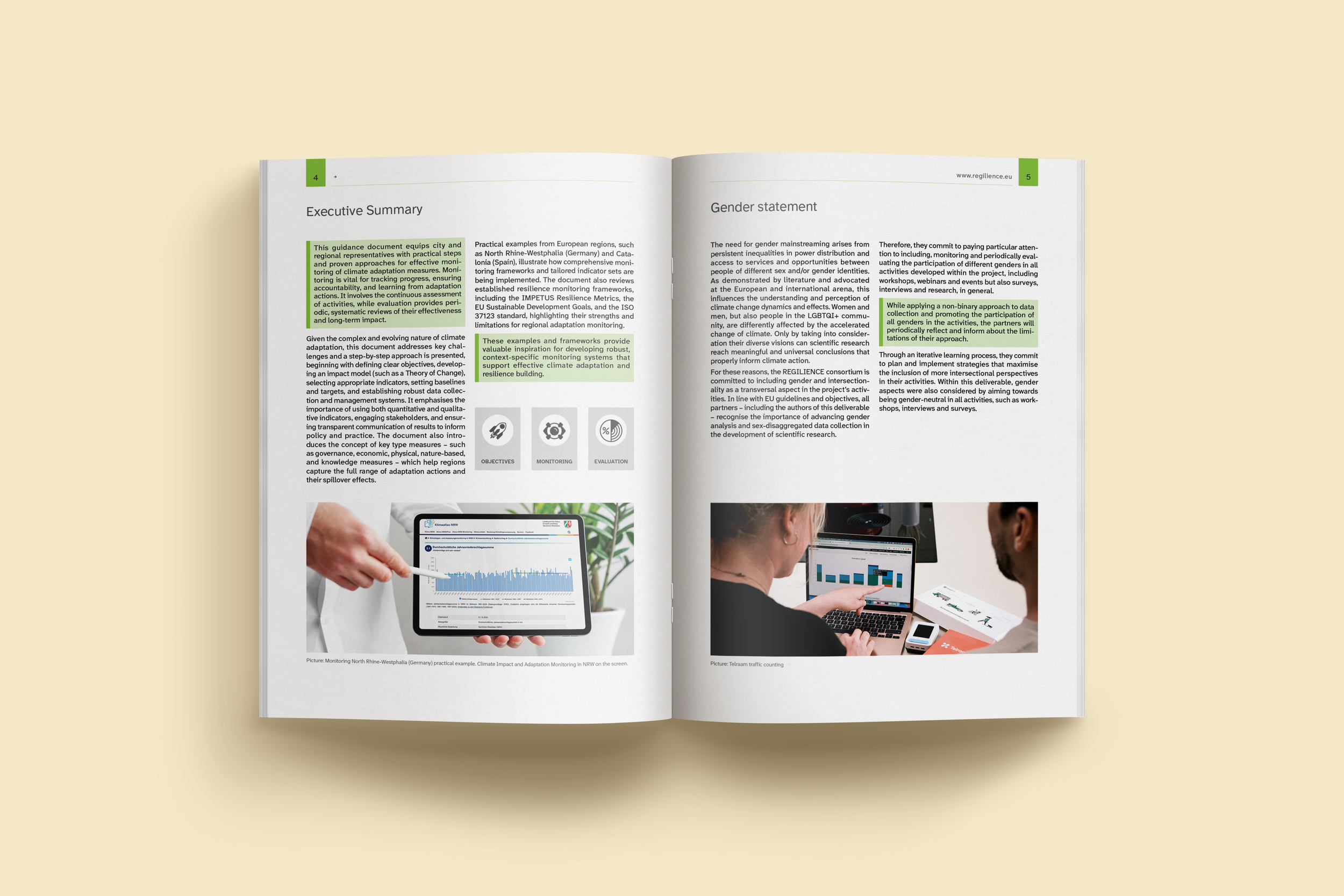From Plans to Practice:
Smart Monitoring for Regional Climate Adaptation
In terms of publications, this new guide from the REGILIENCE project is practically a landmark. Released in October 2025, From Plans to Practice: Smart Monitoring for Regional Climate Adaptation represents something that's been sorely needed: a hands-on document that treats monitoring not as bureaucratic box-ticking, but as the living, breathing work of building regional resilience.

Messy reality of climate adaptation
There are many very good things about this publication. Most significantly, it addresses the messy reality that climate adaptation isn't a neat, linear process with clear finish lines. It acknowledges that attribution is tricky, baselines are often missing, and the effects of today's interventions might not reveal themselves for years. All fingers crossed that regional representatives actually use it.
The guidance walks through monitoring frameworks from North Rhine-Westphalia and Catalonia, offering real examples rather than purely theoretical constructs. The step-by-step approach (from defining purpose to analyzing results) has a methodical clarity to it. The document introduces "key type measures" (governance, economic, physical, nature-based, knowledge) that help capture spillover effects. Did I mention it emphasizes both quantitative and qualitative indicators? An embarrassment of riches.
But as with any substantial publication, there are also design challenges that demand attention. Every section lightens up the weight of complexity, and guides readers through dense technical content without losing them in the weeds.
My task as graphic designer was to home in on the foundational elements. I needed to identify the high-touch surfaces of this document and make sure they communicate with clarity. To start, I focused on:
Grid system that holds 70+ pages together.
Typographic hierarchy that signals what matters most.
Breathing room around dense paragraphs of guidance.
Careful color-coding that distinguishes monitoring from evaluation, steps from examples, frameworks from practice.
Because here's what I've learned from years of designing policy documents: before you can tackle the compelling visuals, you need to get the grids right. You need margins that create space for thought. You need headers that act as reliable wayfinding. You need a system that works as hard on page 47 as it does on page 1.
Because if regional climate adaptation is going to work, the guidance supporting it needs to be as thoughtfully constructed as the monitoring frameworks it describes.
Deliverable title: Deliverable 3.5 Tracking Progress Towards Adaptation: Guidance for Effective Monitoring
Completed in October 2025
Authors: Theresa Kaiser (adelphi), Stephanie Bilgram (adelphi)
Reviewed by: Nadège Seguel (FEDARENE)
Graphic design: Agata Smok
Co-funded by the European Union under project ID HORIZON2020 101036560





